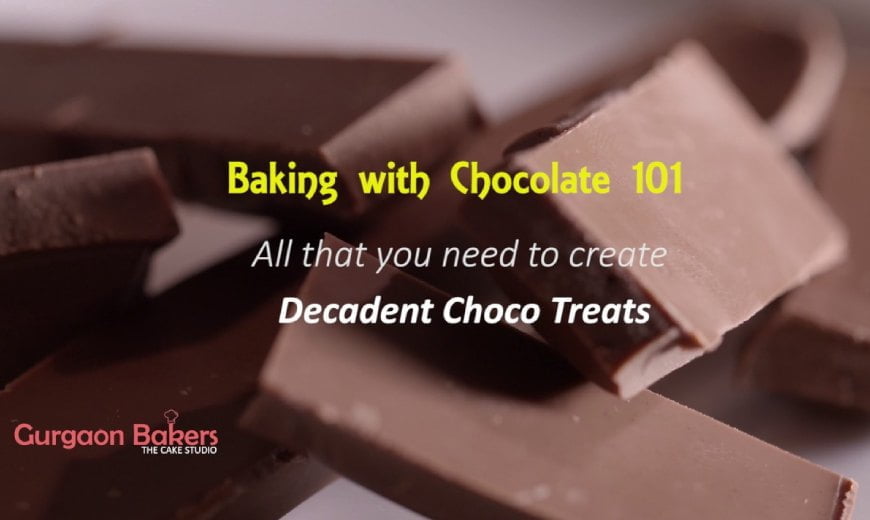Chocolate and baking go hand in hand.
We love chocolate so much that we dare you to come up with a dish that cannot be made better with chocolate. You’ve gone blank, right? Yep! That’s the power of this awesome creation. Chocolate makes any baked goodie infinitely better. Period.
But, if you’re new to baking with chocolate then it can be a bit intimidating. What type to choose? How to measure it? Should you melt it before adding it to the batter?
Worry not! In this post, we put an end to all your questions on baking with chocolate. First, we introduce you to the different types of chocolate used in baking. Then, we take you step-by-step through a vital skill that all bakers should know: Melting chocolate the right way. We wrap off today’s post, by guiding you on how to store chocolate.
Let’s dive into choco heaven!
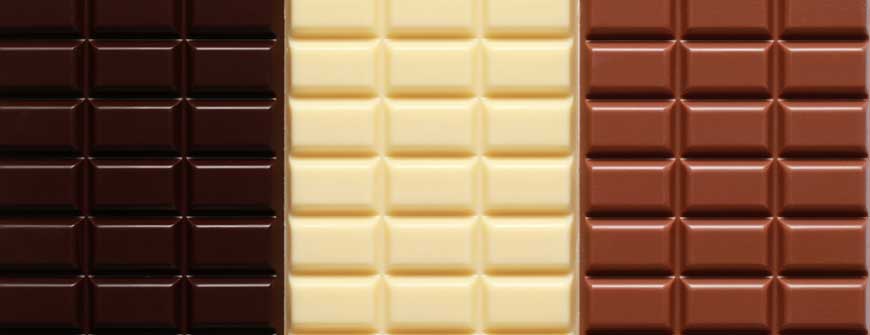
How do I choose the right chocolate?
Well, the answer here depends on the recipe. You have to first, figure out how the recipe makes use of chocolate. Will you melt it and mix it with the batter? Or will you be adding chopped pieces of chocolate? Or will you be drizzling the finished goodie with a chocolate coating?
Before we help you find the right type of chocolate for each of these uses, let’s first take a look at the major types of chocolate used in baking and their specific purposes.
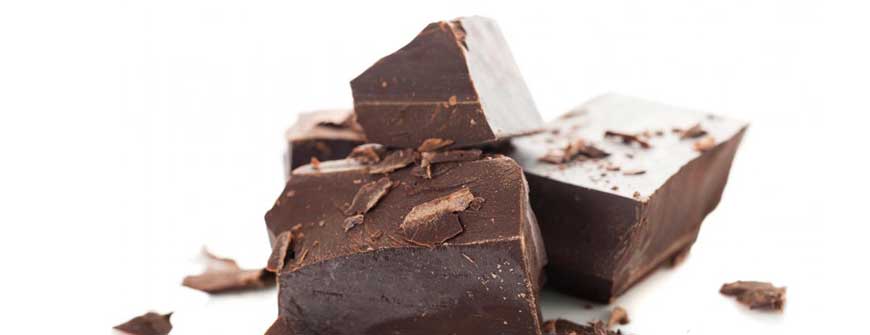
Baking Chocolate
As the name implies, this type of chocolate is primarily used in baking and not as a snack you indulge in. It’s usually available in the form of bars. It’s mentioned as “Baking Chocolate” or “unsweetened chocolate” or “bitter chocolate” on the pack. It doesn’t contain any added sugar and is made from 100% solidified chocolate liquor. This is the liquid that is obtained by grounding cocoa beans into a liquid.
It doesn’t contain any additional ingredients like sweeteners, flavourings, and emulsifiers that make regular chocolates a sweet delight perfect for biting into.
Usually, this type of chocolate is mixed into the batter, and the sweetness of the baked goodie comes from sugar, which is added to the mixture. It’s recommended that you don’t use baking chocolate as a substitute for choco-chips in cookies or instead of candy melts.
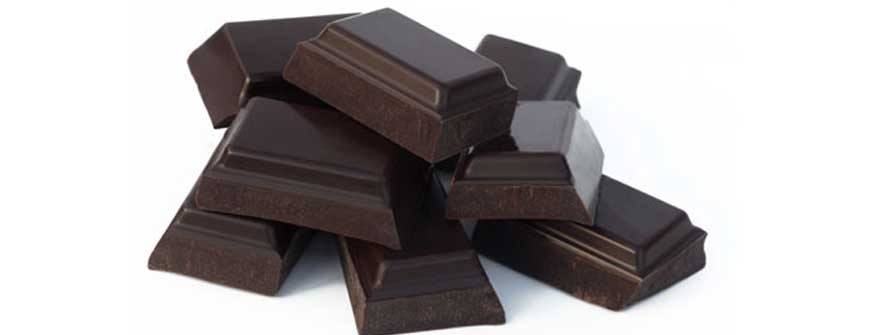
Dark Chocolate
If you add a few fancy ingredients like cocoa butter, emulsifiers, sugar and some flavouring to the chocolate liquor, then you end up with dark chocolate. It has a high percentage of cocoa, usually 65 to 99%. The higher the number, the richer is the dark chocolate.
The other types of dark chocolates that are used in baking are semi-sweet, bittersweet and so on. All these kinds of chocolates don’t have any milk solids.

Semi-sweet and Bittersweet chocolates
They contain around 35% chocolate liquor. Bittersweet chocolate is less sweet than semisweet. Because of its sweetness, semi-sweet chocolates are often substituted for choco-chips in cookies.
All the three types: dark, bittersweet and semi-sweet can be eaten as a snack as well as used in recipes. The rich cocoa flavour makes it an ideal choice for fillings, toppings, and even as ganache.
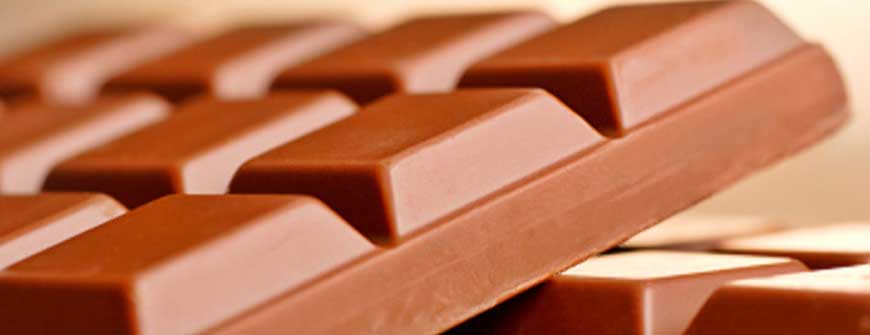
Milk Chocolate
As the name suggests, these chocolates have dairy products added to them. Think Cadburys Dairy Milk. Powdered milk, commonly known as milk solids are added to the chocolate liquor to make milk chocolate. They have around 55% sugar, 20% cocoa and are fall on the sweet side.
Milk chocolates melt quickly and therefore are perfect for icings, fillings and s’mores. It’s recommended that you don’t substitute milk chocolates for baking chocolate in a recipe. This is because the higher sugar in milk chocolates makes it sensitive to heat, so you’re likely to burn it when you use it in a recipe that calls for dark or baking chocolate.

Chocolate Morsels
Commonly known as chocolate chips, they are available in a variety of flavours like dark, white, milk or a mixture of different flavours.
The main reason for using chocolate chips in a recipe is that you don’t want the chocolate to melt entirely. You want it to retain its shape even after the cake or cookie has finished baking. This is why it is suggested that you don’t replace choco-chips with baking or dark chocolate. They are also used as a garnish or for topping.
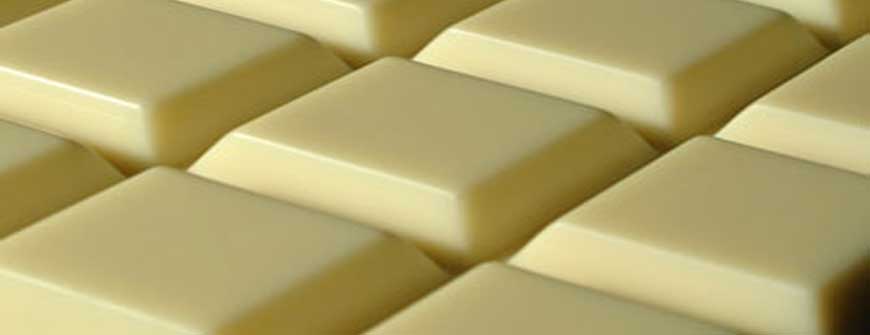
White Chocolate
As you can understand from the name, this chocolate is white in colour. It’s made from milk, sugar, cocoa butter. It doesn’t have any cocoa solids. The ingredient composition is similar to that of milk chocolate, the only difference being the absence of cocoa solids.
White chocolate gives a rich, dense taste to baked goodies. But since the chocolate is awfully sweet, you may need to reduce the amount of sugar in the recipe, or you could end up with an overly sweet dish.
Now, that you’ve understood the different types of chocolates, let’s move on to how to melt chocolate to use it in your recipe.
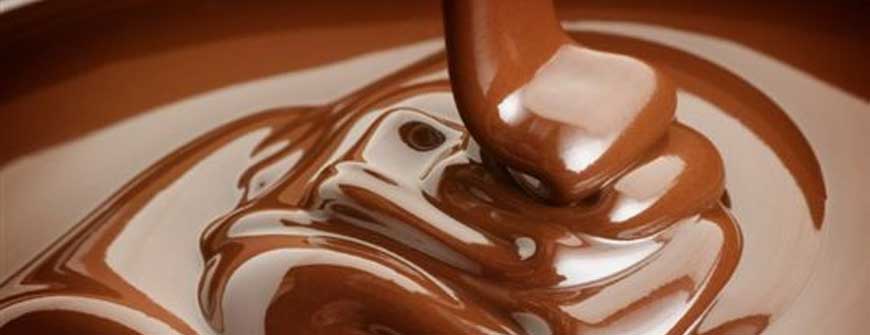
How to melt Chocolate for Recipes Foolproof Tips for Success

✘ Don’t lift the double boiler during melting. This will create steam to escape from the double boiler into the bowl.
✘ Don’t cover the top of the double boiler as it causes unwanted steam to get into the chocolate.


Step by Step Instructions for Melting Chocolates
Step 1:
Coarsely cut your chocolate into small pieces and place it in a bowl or the top of your double boiler.
Step 2:
Fill the bottom half of the double boiler with water. Make sure there is enough space between the top of the water and the bottom of the top bowl. Keep the bowl on the counter and begin heating the saucepan/boiler till the water comes to a boil.
Step 3:
Now, place the bowl with the chocolate on the top.
Step 4:
Reduce the heat to low. Stir the chocolate as it begins to melt. Keep stirring until all the lumps disappear. Now remove the top bowl from the heat. Take care to ensure that the escaping steam doesn’t reach the chocolate.
Step 5:
Use the melted chocolate as stated in the recipe.
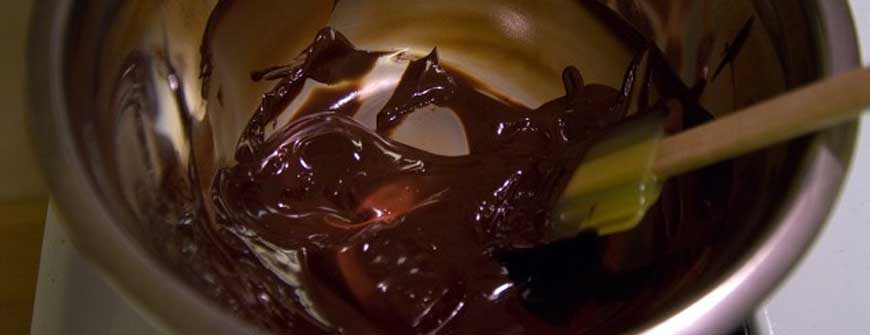

Here are a few ideas to use Melted Chocolate
✦ Dip sugar cookies, either partly or wholly, in melted chocolate to create a decadent treat.
✦ Use the melted chocolate as a coating for candies, cake pops or truffles.
✦ Drizzle melted chocolate over a frosted cake.
✦ Make lovely chocolate garnishes by pouring melted chocolate on parchment paper. Roll it into your desired shape once it sets. Use these garnishes to top cupcakes.
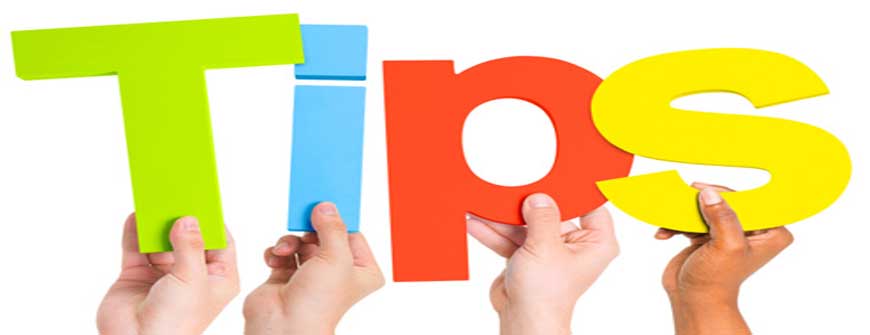

Tips to store your Chocolate
✦ Don’t Refrigerate – Chocolate absorbs other odours pretty quickly. You don’t want your slab of chocolate to smell like your marinated fish. Also, the moisture in the fridge causes sugar in the chocolate to bloom. This means the sugar rises to the top and discolours the chocolate. (This discolouration, however, does not affect the flavour)
✦ Store in a cool, dark, dry place – The best place to store chocolates is in a cool, dry shelf that doesn’t receive sunlight. The ideal temperature is somewhere around 70° F.
✦ Milk chocolates last over a year while dark chocolates can be stored up to two years. White and filled chocolates last for three to four months.
✦ However, there are situations when storing on a shelf may not be ideal. For instances, if you live in warm climates, then you have to store it in the refrigerator. However, before sticking it in the fridge, wrap it tightly with cling foil to protect against condensation and odours.
Up your Baking Game with Decadent, Choco Treats
Now, that you’ve understood all that’s needed for baking with chocolates, it’s time to reach for the bar and create decadent choco treats.
GurgaonBakers is the leading provider of chocolate treats in Gurgaon, we will really be glad to get in touch with you for discussing the business opportunity or to have discussion on this subject. How to ech GurgaonBakers? Simple! Dial us at 989-9988-185 or check us out on www.gurgaonbakers.com


